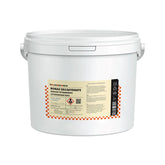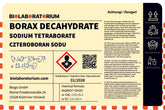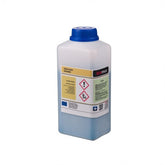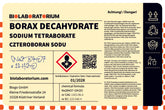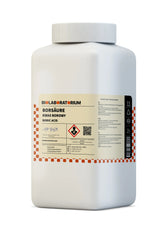Tannic acid – a versatile natural polyphenol
Tannic acid, also known as tannin acid, is a fascinating organic compound that is widely distributed in nature and finds a variety of applications in chemistry, industry, and medicine. As a polyphenol, it plays an important role in plants and has great significance for humans.
The Discovery of Tannic Acid
Tannic acid was first isolated in 1786 by the Swedish chemist Carl Wilhelm Scheele, who extracted it from oak galls. Oak galls are growths on oak leaves that form through the sting of gall wasps. Scheele recognized that this substance plays an important role in leather tanning and coined the term "tannic acid" for it.
In the following decades, the chemical structure of tannic acid was studied more closely. It was discovered that it is a complex molecule composed of glucose and several gallic acid units. This basic structure gives tannic acid its characteristic properties.
Occurrence and Extraction
Tannic acid occurs naturally in many plant parts, particularly in barks, leaves, fruits, and seeds. Especially rich in tannic acid are oak, chestnut, sumac, tea, coffee, and wine. Rose hips, pomegranates, and blueberries also contain considerable amounts.
For the industrial extraction of tannic acid, primarily oak galls are used, which form on oak trees through the sting of gall wasps. These oak galls are harvested, dried, and then extracted. Barks from oak, chestnut, or sumac can also serve as raw materials.
Chemical Properties and Reactions
The chemical structure of tannic acid is complex and consists of a glucose molecule to which several gallic acid units are attached. This basic framework gives tannic acid its characteristic properties:
- Strong Complex Formation with Metal Ions: Tannic acid can form stable complexes with iron(II), iron(III), copper, tin, and other metal ions. This leads to color changes and precipitation reactions.
- Antioxidant Effect: As a polyphenol, tannic acid can trap free radicals and prevent oxidative damage in cells.
- Protein Binding: Tannic acid can reversibly bind proteins, which is important for leather tanning and other applications.
- pH Sensitivity: Depending on the pH value, different forms of tannic acid are present, which influences its reactivity.
These properties make tannic acid a versatile natural substance with numerous application possibilities.
Applications of Tannic Acid
Leather Production
The most well-known application of tannic acid is in leather production. By binding to collagen proteins in the hide, leather becomes water-resistant and durable. Tannic acid-containing plant extracts such as sumac or chestnut bark have been used for tanning for centuries.
Chemical Industry
In the chemical industry, tannic acid finds diverse applications. It serves as a starting material for the production of dyes, paints, adhesives, and metal complexes. Due to its complex formation properties, it is also used in analytical methods.
Medicine and Pharmacy
In medicine and pharmacy, tannic acid is used due to its astringent, anti-inflammatory, and antimicrobial effects. It is used in wound dressings, ointments, toothpastes, and mouthwashes. Tannic acid also plays an important role in Traditional Chinese Medicine.
Food Industry
In the food industry, tannic acid is used as a natural preservative, antioxidant, and flavor component. It occurs in wine, beer, tea, coffee, and chocolate, giving these products their typical flavors.
Further Applications
Additionally, tannic acid is used in textile dyeing, paper production, cosmetics, and even in photography. Its diverse properties make it a valuable and versatile natural substance.
Conclusion
Tannic acid is a fascinating natural product that, thanks to its chemical properties, finds application in numerous industries. From leather production to medicine and food production – tannic acid is a valuable component of our daily lives. Its research and use demonstrate how diverse and useful natural substances can be.

